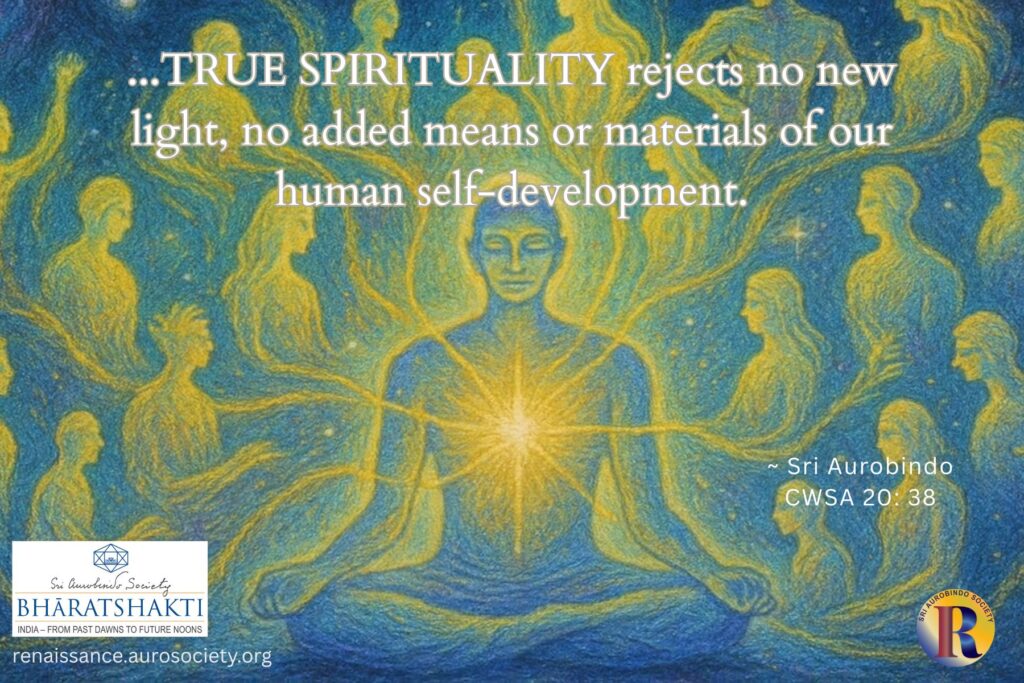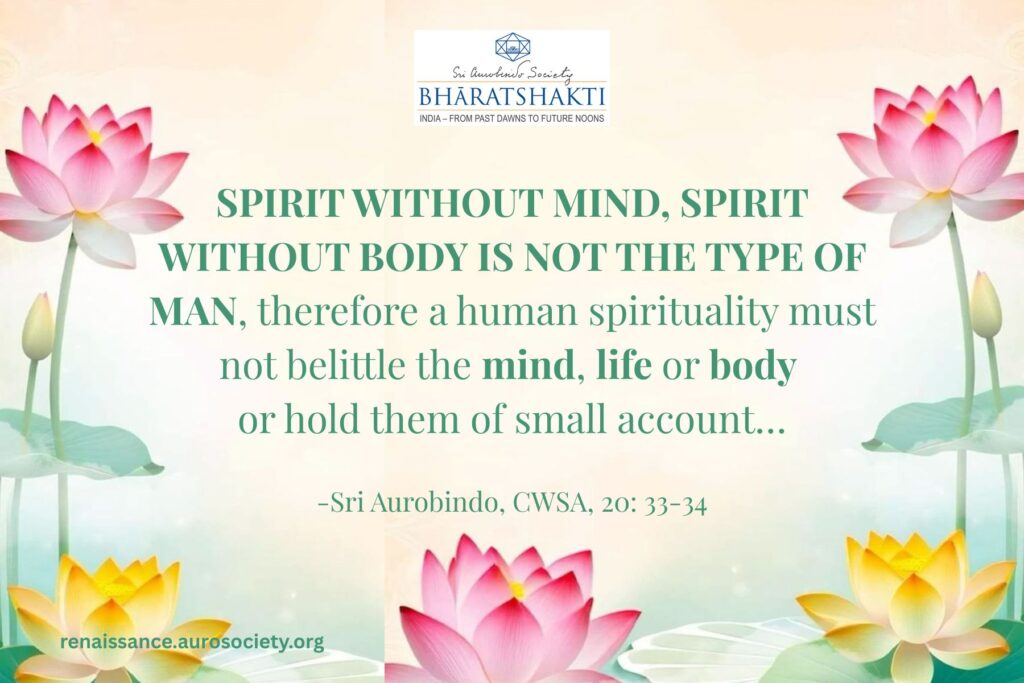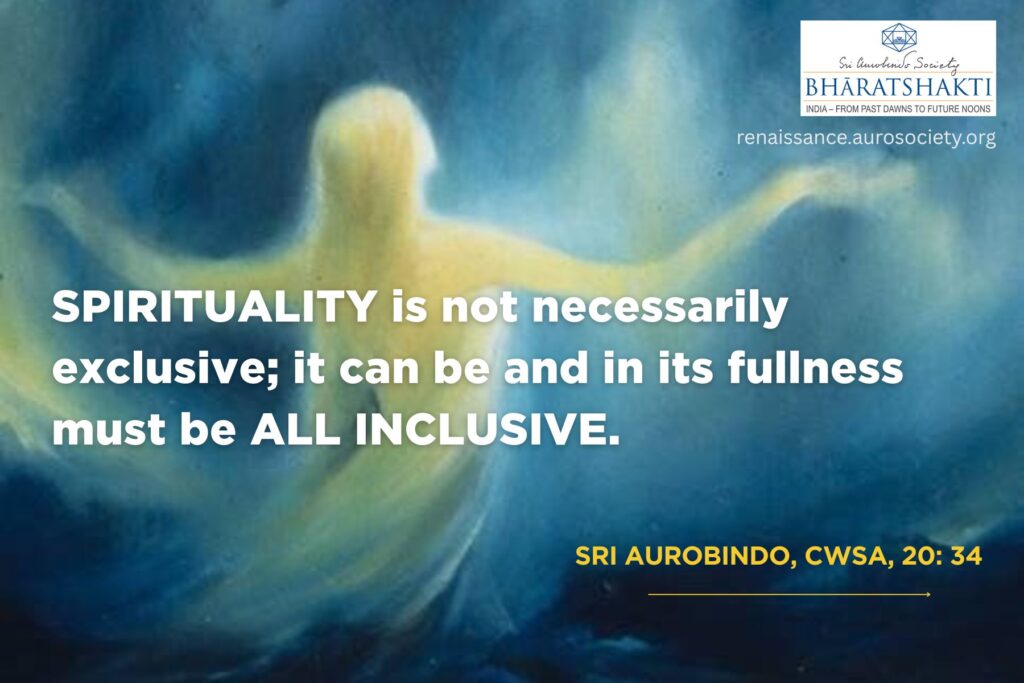Volume VI, Issue 6
Author: Beloo Mehra
Editor’s Note: An article inspired by a visit to Aadivart Crafts Village and Museum which aims to help tribal and other traditional artists navigate commercial considerations of contemporary art world while being true to their indigenous vision of art.

This was my second visit to Khajuraho. A UNESCO World Heritage site, famous for its grand temples with their sculptural richness and architectural magnificence. Three days went by quickly, admiring the detailed and intricate craftsmanship of the sculptures that make these temples stand out amidst the rich architectural and sculptural heritage of India.
Exploring Khajuraho was delightful indeed. But another experience which equally delighted me was the Gond painting tradition about which I didn’t know much before this visit. I was generally aware that this tradition existed and had seen some marvelous Gond paintings at a few museums. But my visit to Aadivart Crafts Village and State Museum on the outskirts of Khajuraho was quite an eye-opener.
Conceptualized by Madhya Pradesh State Government’s Department of Culture, Aadivart Museum gives a fantastic immersive experience. It has been established as a cultural village featuring Tribal and Folk Arts of Madhya Pradesh. The museum compound showcases representative houses and daily needful things of the seven major tribes of the state. These are — Gond, Baiga, Bheel, Bharia, Korku, Kol and Saharia, belonging to five regions – Baghelkhand, Bundelkhand, Malwa, Nimar and Chambal.
Also read:
When Ustad Alauddin Khan Visited the Ashram
Walking through the compound I was mesmerized at the rich artistic expressions everywhere. Going in and out of different display halls, particularly the houses that were constructed there by members of different tribal communities, was an enriching experience.
Artistic pursuit and aesthetic appreciation have always been integral part of the indigenous and holistic knowledge systems in tribal communities. Perhaps that is why the ‘arts’ were not seen as a separate vocational or professional pursuit. And perhaps this is why these artistic traditions get so easily reduced to the status of ‘crafts’ or ‘folk arts’.
The Gond Art
The Gond paintings at the museum, in particular, intrigued me. At the information hall, I came across some reading material on the history of Gonds as well as Gond painting. The tradition of Gond painting dates back to at least 1400 years, if not more.
The word ‘Gond’ is believed to be derived from the Telugu word Kond, which means a forest covered mountain. The proud history of Gonds speaks of their resilience and resistance to preserve their cultural distinctness and identity. Gonds are the largest tribe in India; about 13 million strong as per the 2011 population census. They are spread over the states of Madhya Pradesh, Maharashtra, Chhattisgarh, Uttar Pradesh, Telangana, Andhra Pradesh, Bihar and Odisha.
Historically, they formed many kingdoms of great significance. Between 13th and 19th centuries CE, the region known as the Gondwana extended from present-day eastern Madhya Pradesh to western Odisha, and from northern Andhra Pradesh to the southeastern corner of Uttar Pradesh. Rani Durgavati is the most well-known queen of the region, chiefly remembered for defending Gondwana against the Mughal Empire.
Watch a Talk by Nandini Sengupta:
Rani Durgawati: The Forgotten Life of a Warrior Queen
The integration of Gond art with every aspect of life touches an art enthusiast deeply. This is in fact true of all ‘folk art’ in India, because it literally is art of the people by the people for the people. The Mother explains that the modern artist often makes a mistake of considering artistic production as something external to life. But the best moments in history of Art were when art was considered an intimate part of life. She elaborates:
“The mistake of the artist is to believe that artistic production is something that stands by itself and for itself, independent of the rest of the world. Art as understood by these artists is like a mushroom on the wide soil of life, something casual and external, not something intimate to life; it does not reach and touch the deep and abiding realities, it does not become an intrinsic and inseparable part of existence.
“True art is intended to express the beautiful, but in close intimacy with the universal movement. The greatest nations and the most cultured races have always considered art as a part of life and made it subservient to life.”

Perhaps this intimate connection with all life and existence around is the reason why Nature and various natural elements such as trees, flowers, animals, birds and other mythical creatures are common motifs seen in Gond paintings. Traditionally these icons and motifs were painted on the walls and windows and even floors of their houses using natural pigments. Gonds believe, to this day, that beautiful images bring good luck, and that is why they continue to adorn their homes with various traditional motifs.
“The true painting aims at creating something more beautiful than the ordinary reality.”
~ The Mother, CWM, Vol. 12, p. 233
Step inside the Traditional Gond House at Aadivart
Pardhan Gonds are especially known for their artistic skills, in painting as well as music and performing arts. They traditionally served as priests and traditional singers for the Gond rulers. Arts were closely connected with their work of offering worship to the gods and invoking their protection. Pardhans are also credited with refining the art of Gond painting and integrating it with storytelling. Thus, over time religious mythology and folklore also became important inspiration for Gond paintings.
Colourful and delicately crafted with vibrant motifs and repetitive patterns, Gond paintings record the relationship people perceive between their cosmic, natural, social, and religious worlds. Everything in the natural world, including hills, rivers, rocks and trees is sacred to them. Because everything is believed to be the abode of spirit. Representation of flora and fauna is thus seen as an invocation of the spirit’s living presence in all.
“Painting is not done to copy Nature, but to express an impression, a feeling, an emotion that we experience on seeing the beauty of Nature. It is this that is interesting and it is this that has to be expressed…”
~ The Mother, CWM, Vol. 12, pp. 235-236
On different occasions Gonds also make special paintings representing various local deities as well as the associated celebrations and rituals. Many of their deities are localized forms of Vishnu and Kali; additionally, they also worship several other village and clan deities, some of whom are associated with specific functions and life-aspects.
With an intricate and imaginative process of combining dots and lines, mystical forms are created by skilled hands. Seeing a Gond painting makes one recall Sri Aurobindo’s words, “Indian culture was able to arrive at a well developed and an understanding aesthetic use of colour and line from very early times…” (CWSA, Vol. 20, p. 298). Gods and goddesses, animals, birds, horses, elephants, tigers, and other subjects are depicted in vivid, life-like colours.
There is no attempt to imitate the forms seen in nature, nor is there too much abstraction in this art. What appeals to the soul is the simplicity and spontaneity of the form, which is simultaneously mythical and rooted in materiality of life. This art is done not merely for an aesthetic pleasure but to invoke Divine protection and also as a prayer to bring good fortune.
“Not to imitate Nature but to reveal that which she has hidden, to find significative forms which shall embody for us what her too obvious and familiar symbols conceal, has been the aim of the greatest Art, the Art of prehistoric antiquity and of those countries and ages whose culture has been faithful to the original truth of the Spirit.”
~ Sri Aurobindo, CWSA, Vol. 1, p. 577
‘The Times They Are A-changin’
With changing times, Gond painting has also come out of its traditional context. The painting which was once mostly limited to adorning the mud plastered walls and floors of Gond homes, is now being increasingly done on canvas and paper. In addition to the traditional motifs, today one can also see in Gond paintings depictions of objects associated with modern lifestyle such as cars, bicycles, and airplanes.
In 1980s, Jagdish Swaminathanan, a prominent artist and poet was asked to set up Bharat Bhavan in Bhopal. This is now one of the most prestigious museums of tribal and contemporary Indian art. He invited Jangarh Singh Shyam from Patangarh village of Madhya Pradesh to paint the dome of the museum. Born in a family of Pardhan Gonds, Jangarh Singh Shyam eventually became the first Gond artist to create this traditional art on paper and canvas.
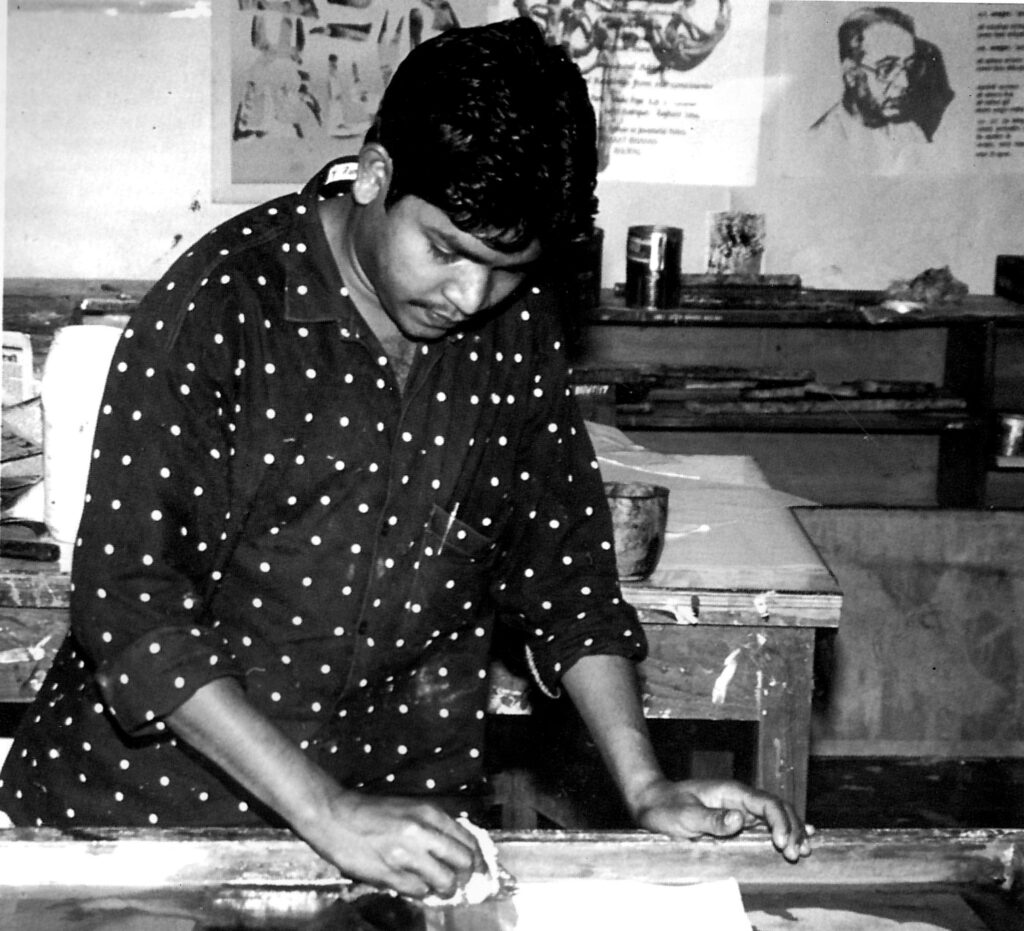
Watch an award-winning documentary on Gond Art
Interestingly, Patangarh village is believed to have at least one painter in every family. Like Raghurajpur near Puri in Odisha, the other famous artists’ village, the entire life of this village is centered around Gond art.
By the late 1980s, Gond painting became known worldwide with Jangarh Singh Shyam holding exhibitions in Tokyo, Paris, and elsewhere. He also began training and helping other Gond artists to pursue their art as a profession. This eventually led to create a new school of contemporary Indian painting called Jangarh Kalam. The murals on the exterior walls of the Vidhan Sabha of Madhya Pradesh were also painted by Jangarh Singh Shyam. His works have also been sold at prestigious auction houses in the West.
Today there are many artists who follow the style of painting pioneered by Jangarh Singh Shyam. Their attempt is to to blend the traditional Gond art with contemporary aesthetics. One such well-known Gond artist is Durga Bai Vyam. She was honoured with Padma Shri Award in 2022 for her outstanding contributions in Art.
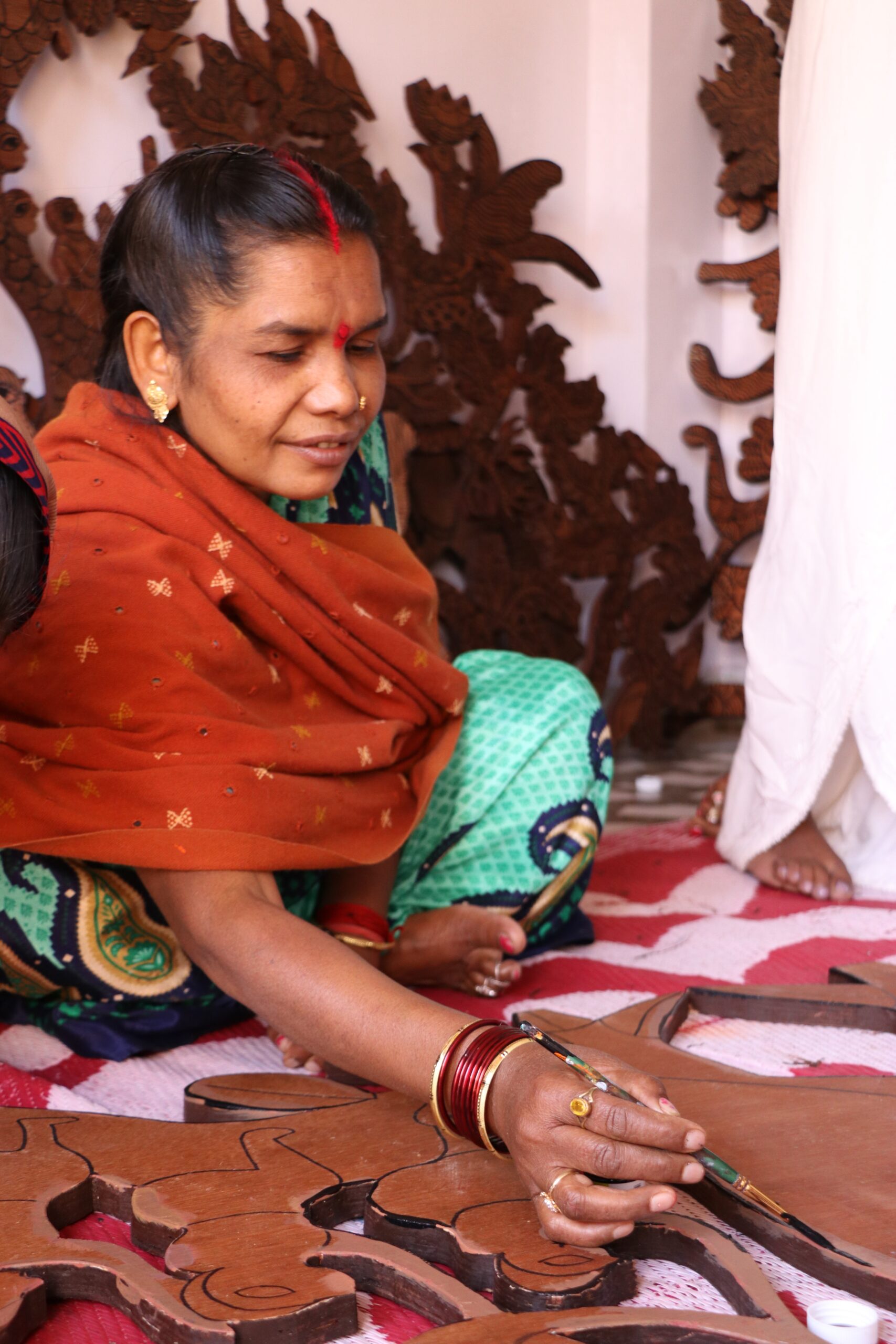
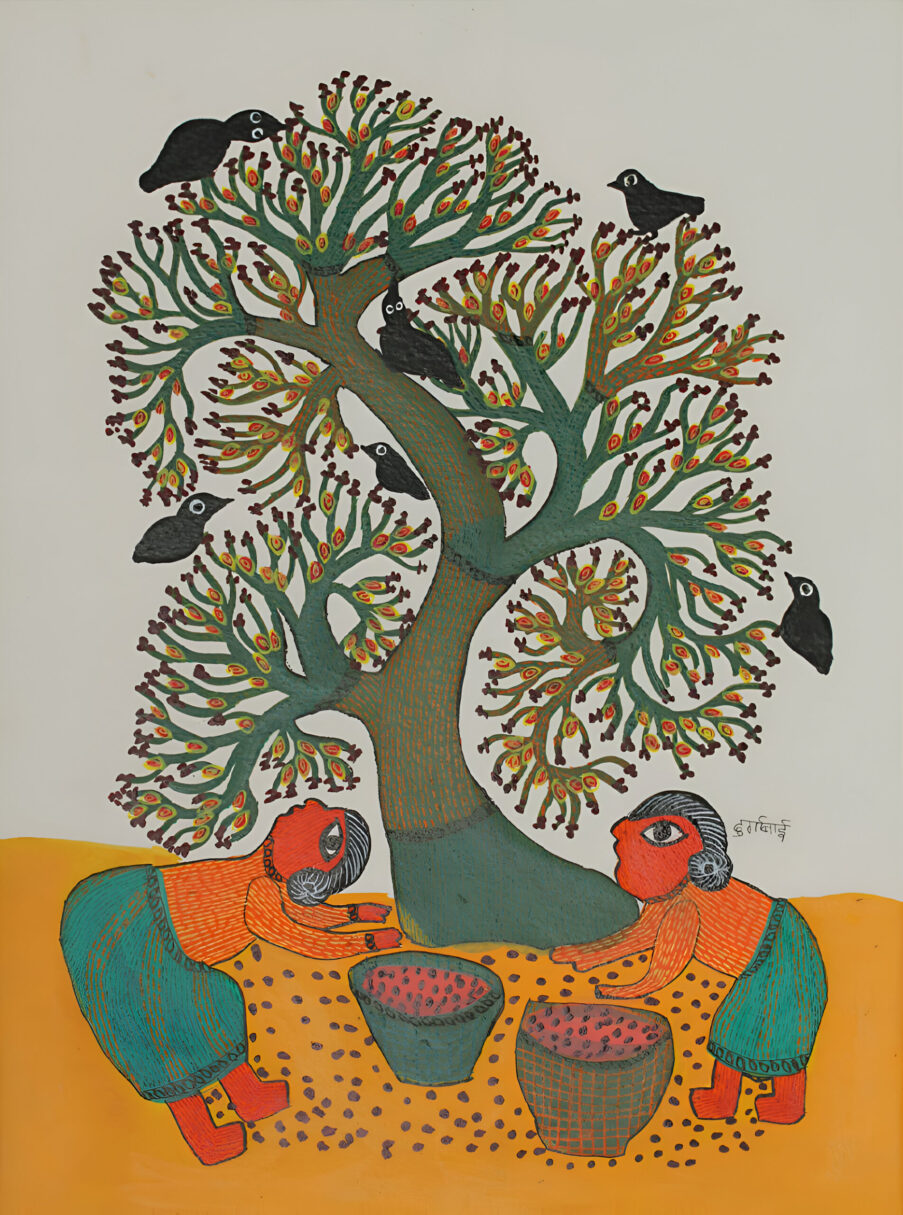
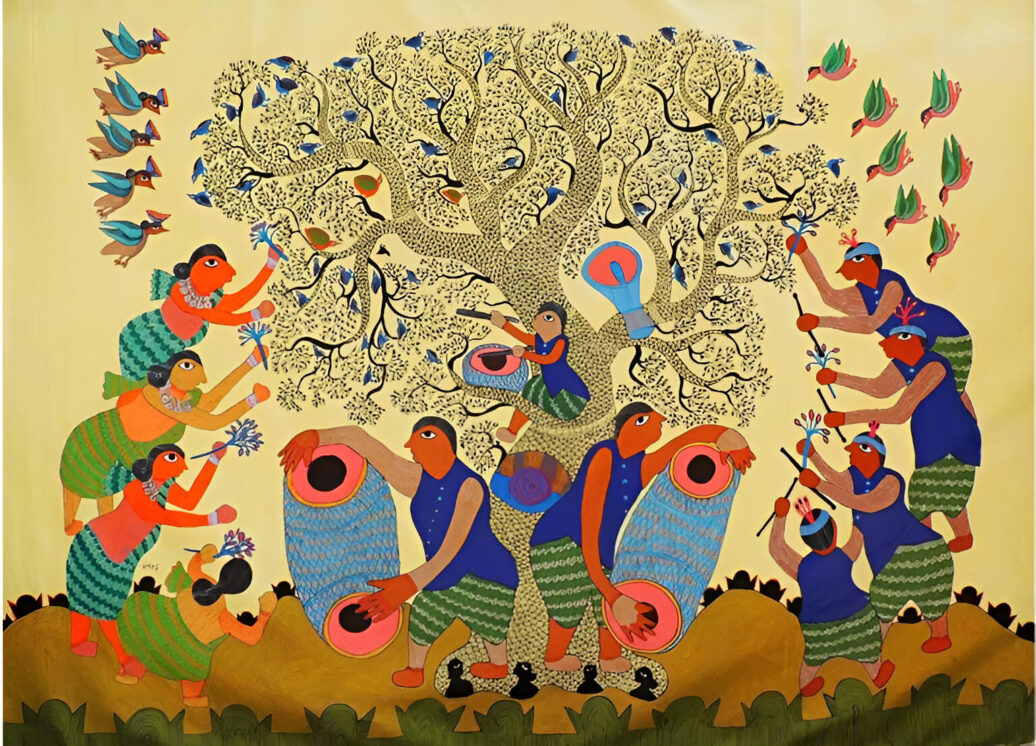
***
Institutions such as Aadivart museum to facilitate the survival of traditional artistic practices in today’s social-economic conditions. The museum helps tribal artists navigate the commercial considerations of the contemporary art world while being true to their indigenous vision of art.
Writing in 1917, Sri Aurobindo wrote of the characteristics of an age of commercialism. This age is marked by “the predominance of the economic man, the universality of the commercial value or the utilitarian and materially efficient and productive value for everything in human life”. As if foretelling about the challenges faced by traditional artists, performers and practitioners of other indigenous knowledge systems in today’s world, he wrote that even in the “outlook on knowledge, thought, science, art, poetry and religion the economic conception of life overrides all others” in such an age (CWSA, Vol. 25, p. 486).
Modern commercial challenges as well as the changing aesthetic tastes and demands require the traditional artists to rethink how best to present their work and keep it thriving and evolving. Well-conceptualized museums such as Aadivart and others have the potential to become a new arena for artists from various tribal communities to not only showcase their rich artistic traditions but also find new markets to sell their works.
~ Design: Beloo Mehra

